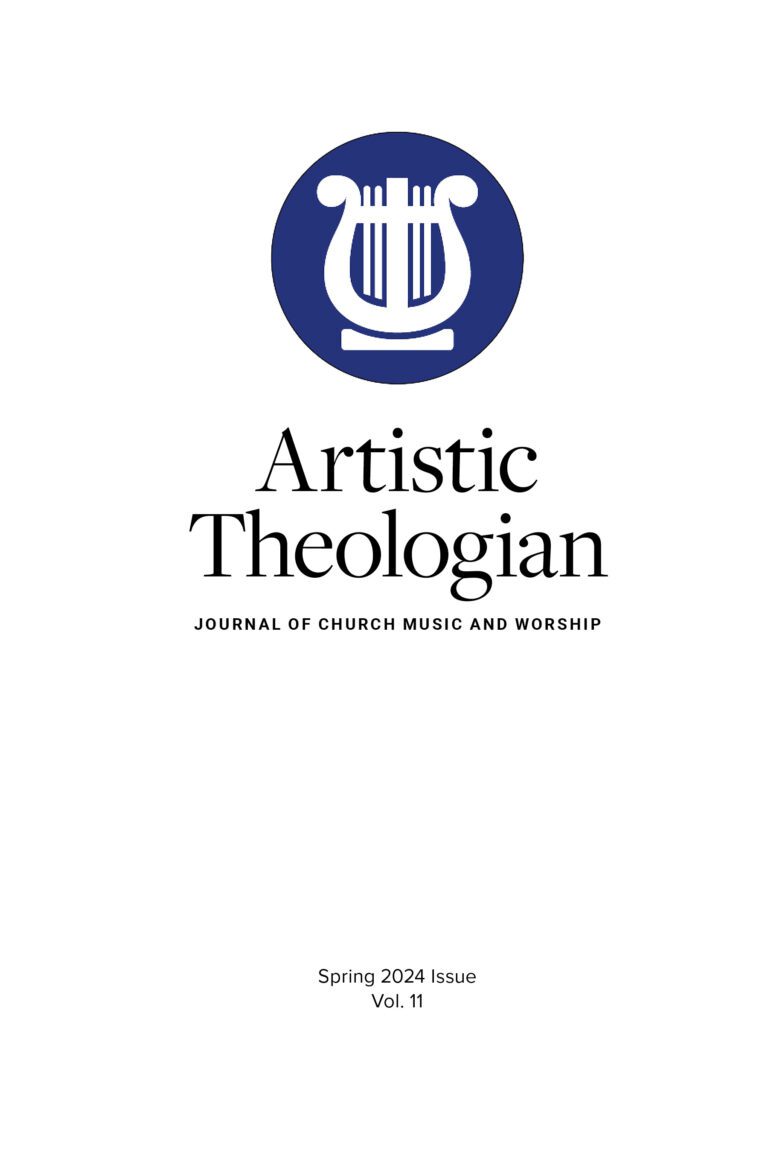
The Relationship of Doxology and Doctrine
Artistic Theologian
Volume 11, Summer 2024
Editor: Joshua A. Waggener
Hicks, Zac. Worship By Faith Alone: Thomas Cranmer, The Book Of Common Prayer, And The Reformation Of Liturgy. Downers Grove, Il: Ivp Academic, 2023. 221 Pp. $29.49.
Zac Hicks pastors at Church of the Cross in Birmingham, Alabama, and teaches as an adjunct lecturer in music and worship at Samford University. He holds a DMin degree from Knox Theological Seminary. In addition to this work, Hicks is the author of The Worship Pastor: A Call to Ministry for Worship Leaders and Teams (Zondervan, 2016) and Before We Gather: Devotions for Worship Leaders and Teams (Zondervan, 2023).
In Worship by Faith Alone, Hicks examines the gospel-centrality of Thomas Cranmer’s theology of worship as found in the Book of Common Prayer by carefully surveying his systematic approach to reforming the liturgy of the Church of England. He explains, “This book seeks to clarify the Scripture’s vision for gospel-centered worship with the hope that such clarification might lead us toward a daring confidence that the very power that stands at the center of Christianity … is sufficient to withstand all contenders and lead the church into the uncharted waters of the future” (2). It is a historical approach to understanding how the church might recapture and maintain a gospel-centered approach to worship and liturgical theology.
The book is divided into two main sections. Part one addresses how Cranmer’s gospel-centered theology was established, and part two addresses how Cranmer’s gospel-centered theology was applied to liturgy in the Book of Common Prayer. Chapter 1 explains the great importance of the concept of sola fide in Cranmer’s theology of purgatory and the sacraments. Hicks writes, “It appears that sola fide is the governor of Cranmer’s theological decisions” (42). Establishing this is important because the sacraments were a major focus of Cranmer’s liturgical work. Chapter 2 then moves to develop a grammar of sola fide from the writings of the Apostle Paul, because “much of the language, many of the themes, and the strong antithetical pattern of negation and affirmation that permeates and fills the Book of Common Prayer suggest a strong and pervasive Pauline influence” (43). A great deal of Hicks’s discussion centers on Paul’s use of the phrase “not I, but Christ” in Galatians 2:20. Hicks demonstrates how this Pauline influence can be traced through the writings of Patristic, Medieval, and Reformation church leaders. Part one of the book ends with chapter 3 and Hicks applying the framework of this Pauline grammar to the liturgical work of Cranmer. He summarizes, “sola fide functions as a theological grammar, governing how theology is constructed according to the gospel, and we noted that Paul’s paradigm of ‘not I, but Christ’ will be a uniquely suitable shorthand for investigating the grammar of Cranmer’s liturgy” (79).
Part two of the book seeks to show how this theological grammar was applied in Cranmer’s work in the 1549 and 1552 versions of the Book of Common Prayer. Chapter 4 discusses how the grammar of sola fide led Cranmer to rearrange the order of the liturgy that had been practiced by Roman Catholics up to that point. Hicks goes to great lengths to show how this came to bear specifically on the practice of the Communion liturgy. Chapter 5 considers how Cranmer’s understanding of sola fide influenced changes that he made to the terminology in the liturgy. Cranmer made certain that the gospel was preached in every aspect of the liturgy so that it could be received by faith alone.
Chapters 6 and 7 discuss the impact of Cranmer’s understanding of sola fide on both the ceremony of the liturgy and the impact this redesigned liturgy had on the devotional life of worshipers. Hicks remarks, “For Cranmer, commitment to the centrality of the gospel in worship was not merely a theoretical exercise, but rather it was the heartbeat of the life of faith for believers. The Archbishop would not go to such extreme lengths nor take such painstaking care if he did not think that the kinds of changes instituted actually made a difference” (188).
The final chapter of the book is a conclusion that also applies Cranmer’s framework to worship in the twenty-first century. Hicks summarizes, “Remaining faithful to the gospel in worship is not simply filling our content with the good news of Jesus Christ but also being ‘gospel-grammared’ in the way that content is delivered” (189). Hicks defines gospel-centered worship and briefly applies it to modern worship.
Specific features of the text will serve distinct reading communities. Hicks’s side-by-side comparisons of Roman Catholic liturgies and the Book of Common Prayer will prove helpful for liturgical scholars. His emphasis on gospel-centrality (following Cranmer) should serve as a guide for worship planners. However, an expanded final chapter would have given room to connect the intricate historical and theological work with a contemporary philosophy for worship ministry.
Overall, Hicks has provided an in-depth analysis of Cranmer’s understanding of sola fide and how that understanding influenced the Book of Common Prayer. He shows how Cranmer’s editorial decisions in the 1549 and 1552 liturgies were driven by a theological grammar that was derived from Scripture (rather than tradition). This historical study may inspire modern worshiper leaders to seek a more gospel-centric approach to worship planning.





